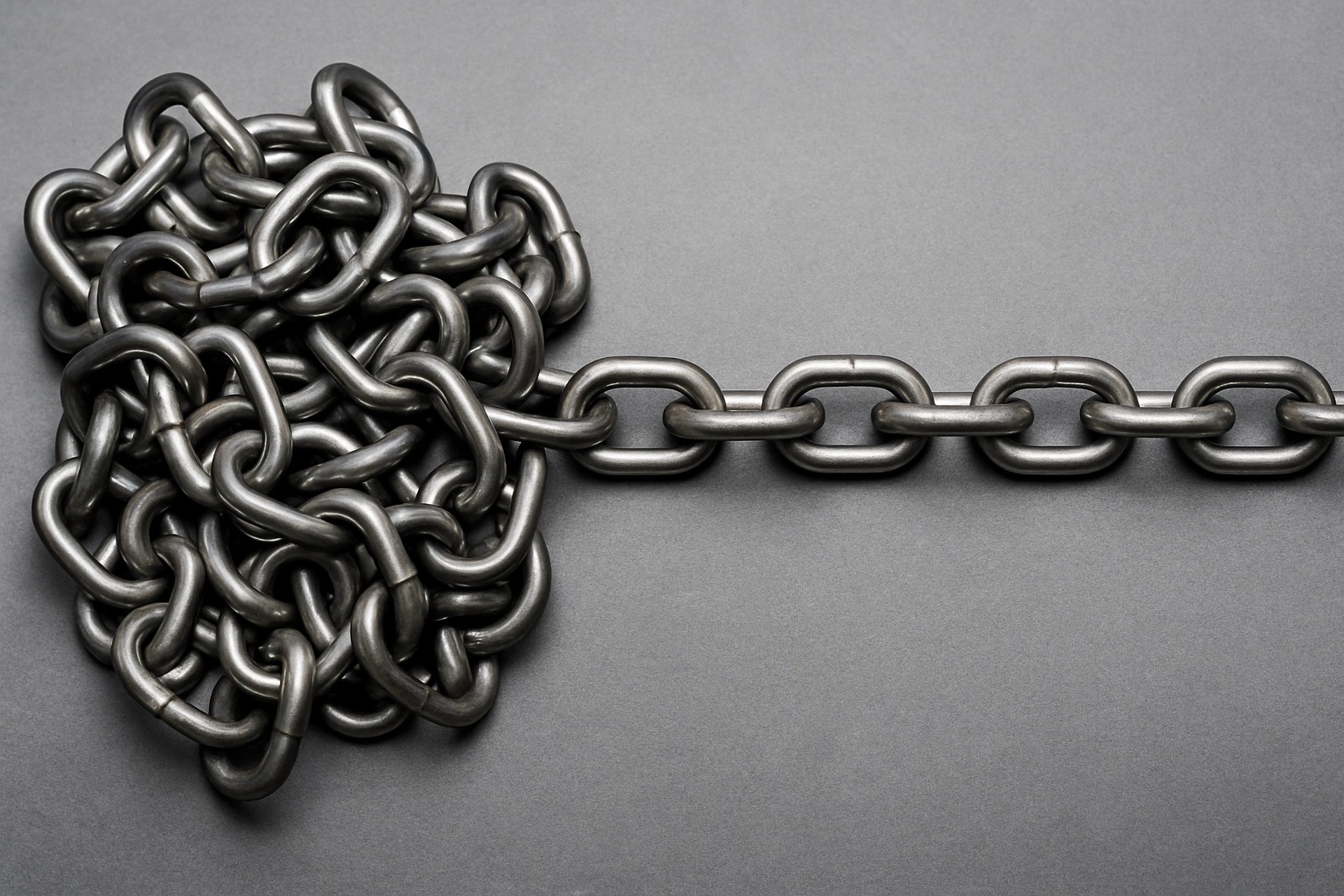
SEO Copywriting Checklist - Rank Higher, Engage More 🚀
Boost your content's SEO! This checklist guides you through writing high-ranking, engaging articles and blogs
03/24/2025
🎉 Check out the official Plixu Chrome extension: Plixu AI SEO Helper

Redirect chains are a common issue that can negatively affect your website’s performance, user experience (UX), and search engine optimization (SEO). Despite being a technical aspect of web management, understanding and addressing redirect chains is crucial for maintaining a healthy website. This guide will explore what redirect chains are, why they are problematic, and how to fix them to boost your website’s overall performance.
Redirect chains happen when one URL redirects to another, which then redirects to yet another URL, and so on. This sequence of multiple redirects forms a “chain”. For example:
URL A → redirects to → URL B → redirects to → URL C
The longer this chain, the more problematic it becomes. Each additional redirect introduces delays and inefficiencies because browsers and search engine crawlers must follow every step to reach the final destination page.
It’s important to note that redirects themselves aren’t inherently bad. They are quite essential for a seamless user experience, especially during site migrations, content updates, or when restructuring URLs. However, when implemented incorrectly, they can lead to chains that slow down your site and diminish its effectiveness.
Redirect chains can arise from various scenarios, often due to improper site maintenance or overlooked updates.
During website redesigns, URLs are frequently changed to reflect the new site structure and layout. This might involve renaming pages, reorganizing categories, or enhancing URL readability for SEO. If existing redirects are not updated to point directly to the new URLs, redirect chains can form. These chains occur when a URL redirects to another URL that then redirects again, creating unnecessary steps that can slow down page loading and harm SEO.
Redirect chains can also result from the improper setup of new redirects. Instead of consolidating existing redirects into a single, direct path, an additional redirect might be added on top of one already in place. This layering often happens when updates are made hastily or without a thorough review of the current URL structure and redirect rules. For instance, redirecting a page to an interim URL before pointing it to its final destination can create needless chains, complicating site navigation and frustrating users.
When transitioning to a new domain or switching from HTTP to HTTPS, multiple redirects are often involved. For example, the sequence might look like this:
http://example.com → https://example.com → https://www.example.com
This occurs because changes are frequently implemented in stages—first securing the protocol, then adding the preferred domain variant (e.g., www or non-www). While this is a common scenario, failing to consolidate these redirects into a single step can result in slower site performance and the risk of losing traffic during the transition.
Many content management systems (CMS) or plugins automatically generate redirects when pages are updated, moved, or deleted. For example, updating a page title and its URL could trigger a CMS to create a redirect from the old URL to the new one. While this functionality is helpful, over time it can lead to overlapping or redundant redirects, forming long chains if not regularly audited. This can complicate website management and may negatively affect search engine rankings.
Redirect issues often stem from a lack of proactive maintenance. Without regular reviews and cleanups, old redirects can accumulate, with new ones layered on top. Over time, this neglect allows redirect chains to persist and grow, leading to slower page load times, reduced site performance, and potential confusion for both users and search engines. Regular audits of your redirects can prevent these chains from forming and ensure a smoother user experience.
Redirect chains can negatively impact your website in several ways, making it crucial to address them promptly.
Redirect chains dilute “link equity,” reducing the SEO value passed from one page to another. Search engines like Google might not fully transfer the value of backlinks through multiple redirects, which can harm the final page’s ranking potential. Additionally, redirect chains consume your “crawl budget,” as search engine bots waste time following these unnecessary redirects instead of indexing new or updated content on your site.
Every redirect in a chain adds latency, thereby increasing page load times. A slow-loading website frustrates users, leading to higher bounce rates and lower engagement. Since site speed is a critical component of user experience, this is an issue that demands attention.
Redirect chains can strain server resources and slow down page loading times, which are vital metrics for both users and search engines. Google’s Core Web Vitals emphasize the importance of quick and efficient page performance.
Long or poorly implemented redirect chains can hinder search engines from properly indexing the final destination URL. This can lead to ranking issues and reduced visibility in search results.
Identifying redirect chains is the first step toward resolving them. Here are some tools and techniques to pinpoint these issues:
Once you’ve identified a redirect chain, it’s time to take action. Follow these best practices:
URL A → URL B → URL C
Change it to:
URL A → URL C
This ensures users and search engines reach the final URL without unnecessary steps.Looking to optimize your website for better performance and rankings? Try Plixu AI, the ultimate SEO audit tool powered by artificial intelligence. Get actionable insights in seconds!
Run A Free AI SEO Audit NowTo prevent redirect chains and ensure efficient site performance, adhere to these best practices:
In a recent SEO project, a client’s website experienced a 20% drop in organic traffic following a site migration. Upon investigation, multiple redirect chains caused by outdated .htaccess rules were discovered. Using Screaming Frog SEO Spider, over 50 problematic chains were identified. By consolidating these rules into direct redirects, the following results were achieved:
##🔚 Conclusion
Redirect chains might seem like a minor technical detail, but their impact on SEO, user experience, and overall website performance is significant. By understanding their causes and effects, and by taking proactive steps to identify and fix them, you can ensure your website remains optimized for both users and search engines. Regular audits, careful redirect planning, and close collaboration with your development team are key to keeping your website chain-free and running efficiently.
Q: Can redirect chains negatively impact SEO? A: Yes, long redirect chains can hinder search engine crawling and indexing efficiency, leading to lower rankings and reduced visibility in search results.
Q: How can I prevent redirect chains from forming on my website? A: Regularly audit your redirects, avoid unnecessary or outdated redirects, and monitor any changes that may trigger new redirects.
Q: Are there any tools that can help identify redirect chains? A: Yes, browser extensions like Redirect Path and SEO crawlers like Screaming Frog SEO Spider are helpful in identifying redirect chains. Google Search Console also provides insights into crawl errors related to redirects. Overall, it’s best to use a combination of tools for a thorough analysis.
Q: Are redirect chains harmful to user experience? A: Yes, redirect chains can slow down page load times and lead to frustrated users who may abandon your website. They can also create confusion or mistrust among visitors if they repeatedly encounter redirects instead of reaching their desired destination. Ultimately, providing a seamless user experience should be a top priority when managing redirects.
Try a free AI SEO Analysis
Boost your content's SEO! This checklist guides you through writing high-ranking, engaging articles and blogs
03/24/2025

Learn how to optimize your content to drive conversions, from understanding your audience to leveraging social proof.
01/16/2025